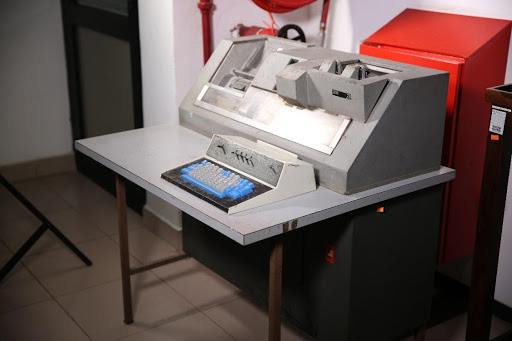
- Model: IBM-29
- Developer: Clair D. Lake and Royden Peirce
- Manufacturer: IBM
- Introduced with: System/360 mainframe computer
- Released in: October 14 1964
Specifications
- Operating voltage: 48 volts DC
- Keyboard: Similar to ASCII but lacks lower case letters and includes two special characters not in ASCII (“not sign” (¬), and “cent sign” (¢)
- Special features: Did not require a vacuum tube, Leading zeros feature, Program selection switch
- Program Drum: Allows keyboard shortcuts
Description
The IBM 29 card was announced in 1964 to coincide with the introduction of the IBM360. The punch and its companion, the IBM 59 card verifier, were used to record and check information in punched cards. The cards were then read and processed by a computer or an accounting machine. The IBM 29 remained in the product catalog until May 1984.
The machine is easy to operate, quiet, and attractive. One of its most important feature is the simple means of setting it up quickly for automatic control of duplicating operations, automatic insertion of left zeros, or skipping. Each setup or program is made by punching a card and mounting it on a program drum, which is inserted in the machine.
On the 29 Card Punch, with unlimited use of two program levels, each program card can contain two totally different, complete 80-column programs. Either program can be selected for card to card use by setting a program selection switch. If it is desired to use both program levels to control punching on a single card, alterations from program to program can be made by program selection keys on the keyboard. Programs can be alternated at will, while punching a single card, by means of these keys.
